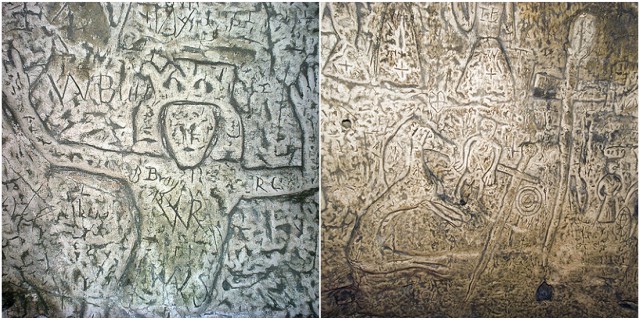Royston is a town in the District of North Hertfordshire in England. One of the landmarks of this little town is the Royston cave which is hidden beneath Melbourn Street.
The cave was accidently discovered in 1742 by a workman who was trying to make footings for a new bench for a market. He found a millstone under the surface of the ground and when he lifted the millstone, he found a shaft leading into the chalk. The first one who entered the hole was a young boy. He was lowered into the cavity by a rope and found that instead of a network of tunnels, there was “just” a bell-shaped cavity.
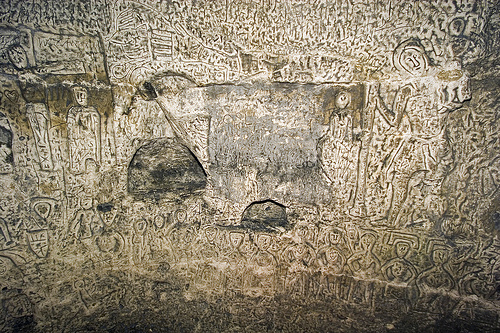
The cave was filled with dirt and rock. It was emptied quickly, uncovering the strange carvings in the lower part of the chamber. Unfortunately, the soil which contained human bones and fragments of pottery was never analyzed.
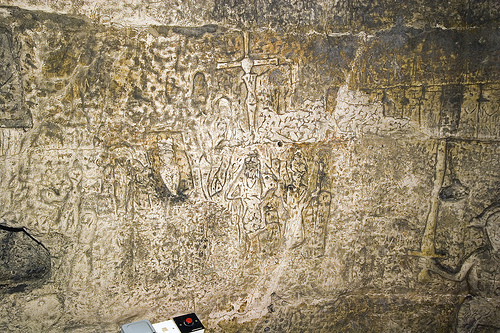
The original entrance was closed and another entrance was made by a bricklayer named Thomas Watson. His house was just opposite the cave and so he dug a 22m long tunnel between his house and the cave and started to charge sixpence for each visit. This entrance is still used today.
Many historians visited the cave and gave their theories about its origin. Some think that the Knight Templars used the cave as a secret meeting place. Other historians claimed that the carvings contained Masonic symbols that could link the cave to James I, who was himself a Freemason, and who maintained a hunting lodge at Royston. According to other studies, the cave may simply have been a hermitage or prison. Another theory is that the cave was used as an Augustinian storehouse. However, there is very little hard evidence to support these theories.
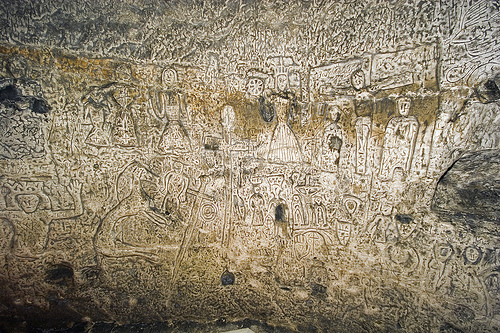
The carvings on the walls have a medieval appearance and it seemed that they had initially been colored, but at the time of their discovery, only small traces of color were visible. Most of the carvings have a religious connotation; below the original entrance is carved St. Christopher; on the west part of the wall are St. Katherine, and St. Lawrence; and next to St. Lawrence are three figures, of a man, woman, and child, that are believed to be Joseph, Mary, and Jesus. There is also a figure of St. George, the patron saint of England.
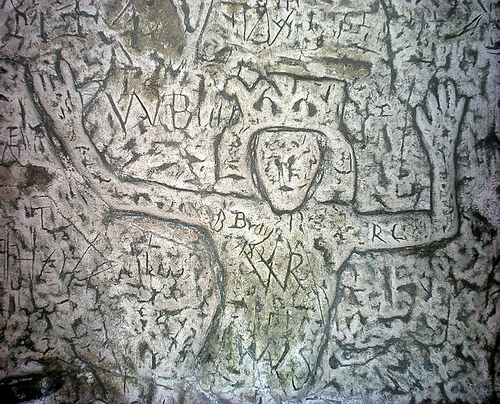
There is a long row of figures, but not all can be identified. Among the multitude of carvings, there is a disembodied head, which might represent John the Baptist and others which represent the Holy Sepulchre and the Crucifixion of Jesus Christ. Above the Sepulcher is a symbol of the Holy Spirit, the arm of God that releases a dove.
Two small figures of a man and a woman are carved below St. Katherine. Above the woman, there is a floating crown. It is believed that these figures represent Richard I, the Lionheart and his wife Berengaria. Berengaria was never officially crowned Queen of England which explains why the crown is floating above but not on her head.
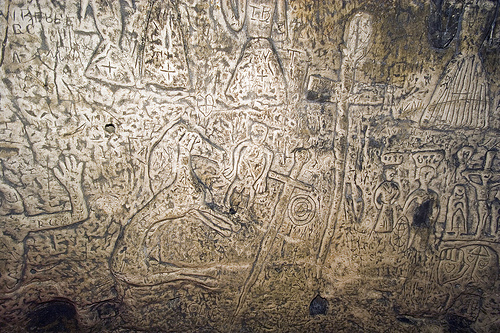
There are many other carvings which cannot be identified. It is still unknown who carved the walls of the cave and for what purpose.
Today, the cave is owned by the Town Council and opened for public visits.
